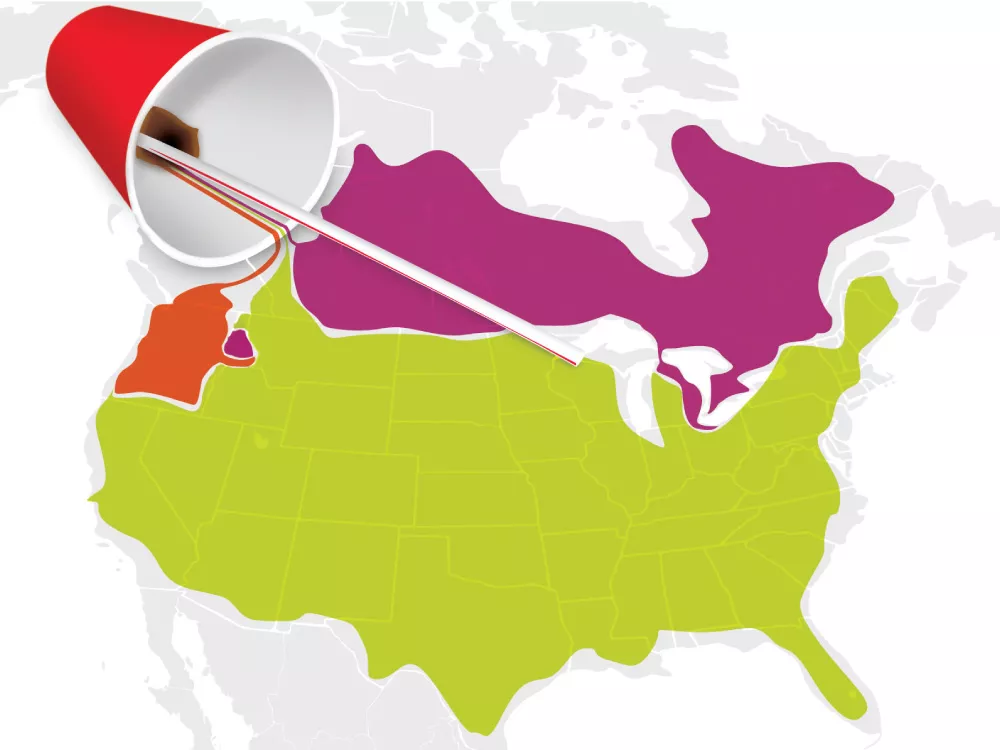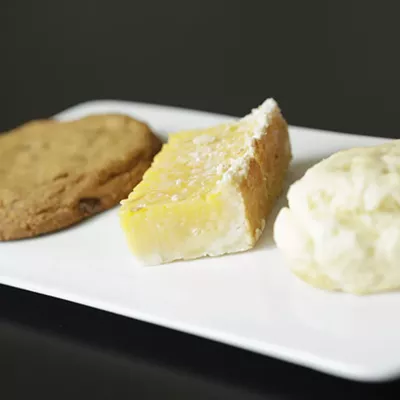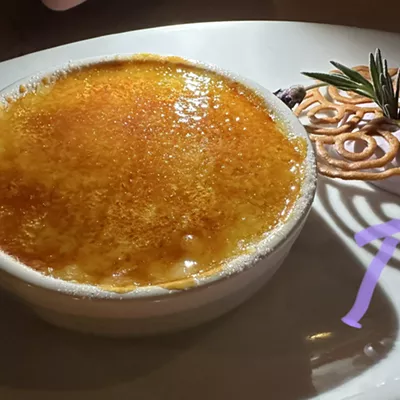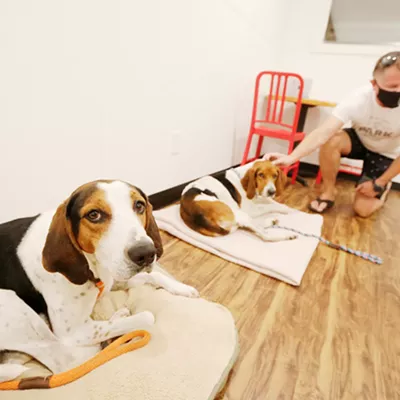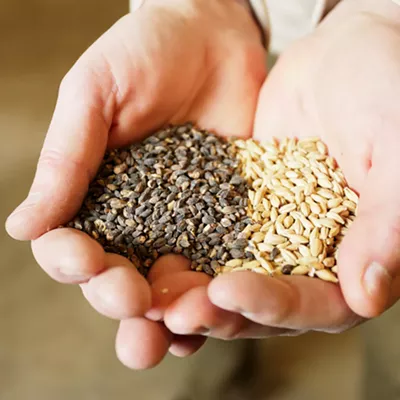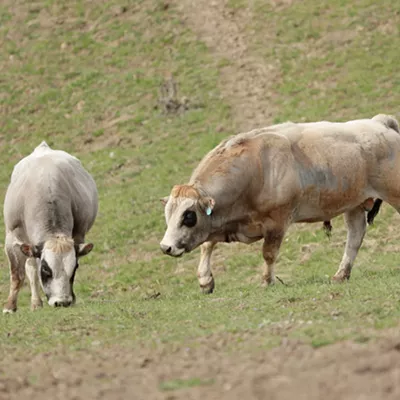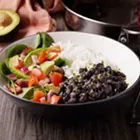There is a machine in this world that can dispense nearly any Coca-Cola product you could ever ask for. It can flavor them, too. With a couple presses of the touch screen, you can get a Grape Sprite. Beep, boop, beep: Vault Peach. Boop, beep, boop: caffeine-free Diet Cherry Vanilla Coke.
Take Our Survey
The thing is called the Coca-Cola Freestyle. They have one at the Pita Pit in Coeur d’Alene, and at HuHot Mongolian Grill in the Valley. Jeff Moe, manager at HuHot, says the thing has sent his pop sales through the roof, mostly because of its many diabetic-friendly options.
I haven't come to the Valley for a niche sugar-free soda, though. I have come pursuing my childhood. Young Luke and his friends used to approach a soda fountain and, with a sense of mischief and curiosity, we’d get a splash of most, if not all, of the flavors. We’d drink them down and head back, trying combination after combination.
I would have gone nuts for the Freestyle and its thousands of theoretical flavor combinations (only about 100 are programmed in). Standing before it now, Older Luke is experiencing similar feelings. “When you were a kid,” I ask Moe, “did you ever mix, like, every single type of soda together?” He got a big smile on his face. “Sure,” he says, “a suicide.”
Whoa, hold on there. “Jeff,” I ask, “You’re not from around here, are you?”
Anybody who’s gotten out of their own county knows that we don’t all use the same words for things, even when speaking the same language.
One woman’s creek, for example, is another woman’s crick. (That second woman is my mother.)
But the differences in the words we use, the way we use them, and how we combine them say important things about who we are and where we’re from.
These differences often seem ephemeral, says Kurt Queller, a cognitive linguist at the University of Idaho, but they often have hard geographical boundaries. Scientists like Queller call the area where a particular word or expression is used an “isogloss.” Dialects are made up of hundreds, if not thousands, of these. And while it’s common for differences in dialect to confuse people, even variations from one isogloss to another can trip a conversation up.
That’s what happened with Moe and me. Standing in front of the Coca-Cola Freestyle, we were talking to each other across a linguistic borderland. Not everyone, it turns out, calls their Frankenstein soda the same thing.
Following a two-week investigation into the drinking and naming habits of Yanks and Canucks (a scientific mix of web snooping and Facebook-question-posing), The Inlander (mostly just me) has concluded that countless self-respecting North Americans mixed soft drinks as children.
We found that most of America from southern California to Florida to Maine calls the drink a “suicide.” In our little nook of the Northwest, though most of Washington state and Oregon it is overwhelmingly called a “graveyard.”
In Canada, people call it “swamp water” again, overwhelmingly so. Southern Idaho sides with the rest of America, calling it a suicide, while the Panhandle possibly due to its frontier spirit or just its proximity to Canada and its large population of former Californians uses the three terms interchangeably.
“Suicide” carries the weight of history. In For God, Country and Coca-Cola, an exhaustive history of the soda maker, journalist Mark Pendergrast writes that a drink called the “suicide” had emerged as early as the ’50s. “Using Coca-Cola as a base,” he writes, “a suicide called for the addition of every other flavor available.”
As early as the mid-’70s, though, and possibly earlier, regional slang had popped up. Angela Russell-Throneberry, who split her childhood between Spokane and Moses Lake, Wash., was using “graveyard” by about 1975, she says. Stephanie Van Zyverdan- Treadwell would go to Skateland in the Spokane Valley in 1980, pay 50 cents and “hit every silver lever.” She says she and her friends called it “a graveyard, although I don’t get why.”
Queller says slang like this often springs up and dies out in a decade. He cites “far out” as an adjective nobody uses anymore. So it takes powerful patois for an expression to stay in favor as long as “graveyard,” “suicide,” and swamp water have.
Back at HuHot, Jeff Moe admits that he is, indeed, not from around here. He grew up in Wisconsin the heart of “suicide” country. He learned the term there.
Moe asks if I’d like a suicide. “Graveyard,” I say, then ask him to make one with Coke, Sprite, Pibb and Orange.
It comes out nicely carbonated and has a gradient of color that starts at orange and ends the deep caramel of cola, exactly how I remember them. I take a deep drink.
“How’s it taste?” Moe asks. It tastes like childhood a childhood spent right here.

